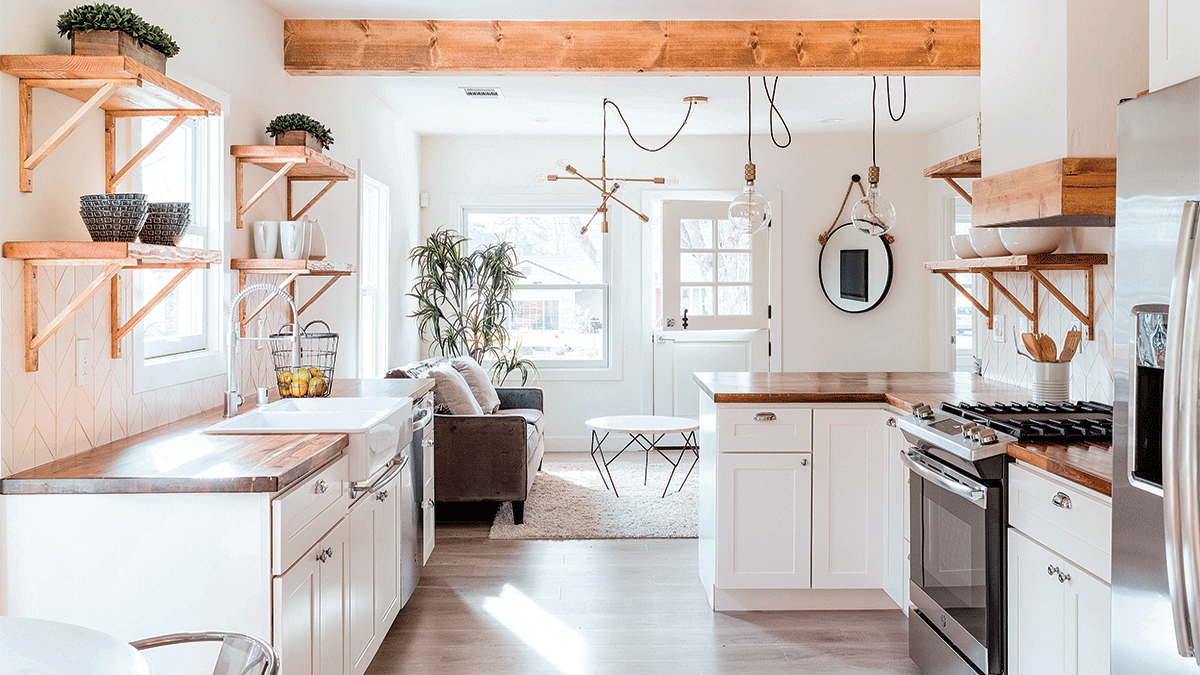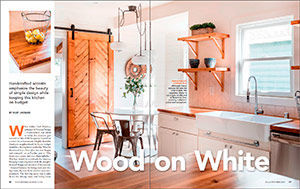Wood-on-White Kitchen
Handcrafted accents emphasize the beauty of simple design while keeping this kitchen on a budget.

Synopsis: Designer Art Peychev achieved this kitchen remodel for just $19,000 using affordable methods such as floating shelves made of Ikea brackets and site-cut wood. But the kitchen outshines its budget due to the custom details, specifically the repeating diagonal line accents in the chevron backsplash tile, chevron-pattern barn door, and butcher-block accent carvings.
When Arthur “Art” Peychev, principal of Novoya Design + Construction, was asked to helm the interior gut remodel of this 1930s bungalow located on a corner lot in Sacramento’s highly desirable Elmhurst neighborhood, he knew budget would be a driving factor on this flip. What he discovered was a floor plan that was choppy and cramped—or, as Peychev puts it, “The house was a maze, and very claustrophobic.” The key would be to rethink the interior, bringing it into alignment with the straightforward design and structure of the exterior.
Situated between the living room and dining room, the size of the kitchen was compromised. The first big move was to take down the dining room and living room walls, which cramped the kitchen, and replace them with LVL beams. To delineate the dining nook, Peychev dropped that section of ceiling and added tongue-and-groove accent walls. On the living room side, a peninsula separates the kitchen from the living room without obstructing the flow.

White-oak butcher-block-slab countertops set atop painted cabinetry serves to warm the bright interiors of the compact kitchen, and that combination of wood tones and whites is carried throughout the rest of the house, even on the exterior.
Much of the kitchen’s appeal is owed to the custom, handmade wood elements and true stone tile. The team voted against upper-wall cabinets in favor of open shelves to enhance the clean and breezy feel. Originally, the plan for the backsplash was standard subway tile, but ultimately Peychev decided on 3-in. by 9-in. limestone tiles, which he cut on-site with a 45° angle on both ends to create achevron pattern—a tricky task.
To view the entire article, please click the View PDF button below.






